LORD SHIVA MOST POWERFUL 12 AVATARS
This Hindu deity, in a human form, is seen sitting in a meditative posture. It is Lord Shiva who is also worshipped in the form of a Linga.
Lord Shiva is a principal deity in Hinduism, representing destruction and transformation in the cosmic cycle. He is a yogi, meditator, and ascetic, often depicted with ash smeared on his body, a serpent around his neck, and the sacred river Ganga flowing from his hair. Shiva is also known as Nataraja, the Lord of Dance, and is revered through the powerful Maha Mrityunjaya Mantra. Devotees admire his simplicity and compassion, referring to him as “Bholenath,” the innocent one.
1. LORD SHIVA AVATAR NANDI –
In Hindu mythology, Sage Shilada and his wife were childless and deeply devoted to Lord Shiva. Through their prayers and penance, Lord Shiva’s pleased by Sage’s devotion, Lord Shiva took birth as Nandi, Nandi was born from a Yagna (sacrificial fire) performed by Sage Shilada, making him a divine and celestial being. Nandi’s unwavering devotion to Lord Shiva is often attributed to his divine origin and upbringing in the presence of the sage.
2. LORD SHIVA AVATAR PIPLAAD –
Piplaad is considered one of the first incarnations of Lord Shiva. In ancient times, there lived a devoted sage named Upamanyu who was a staunch follower of Lord Shiva. Once, during a severe drought, Upamanyu found himself extremely hungry and approached a cow to milk her for sustenance. However, the cow, which was actually a celestial being in disguise, was barren and couldn’t provide any milk. Frustrated and hungry, Upamanyu, in a moment of anger, cursed the cow, saying, “Let thorns grow on your udders!”
The cow revealed her true identity and informed Upamanyu that she was a celestial being cursed to live as a cow. She also told him that his curse would soon be reversed by a divine being. True to her words, Lord Shiva appeared before Upamanyu in a unique and fierce form known as Piplad. In this form, Lord Shiva’s body was covered with sharp thorns.
Piplad, testing Upamanyu’s devotion, asked him to remove the thorns from his body. Undeterred by the danger, Upamanyu carefully removed each thorn, demonstrating immense patience and unwavering faith in Lord Shiva. Impressed by Upamanyu’s devotion and courage, Lord Shiva revealed his true divine form and blessed the sage.
Upamanyu, overwhelmed with gratitude and devotion, asked for spiritual knowledge. Pleased with his sincerity, Lord Shiva granted Upamanyu the knowledge he sought. This incident became a testament to Upamanyu’s unwavering faith and Lord Shiva’s willingness to test his devotees and bestow them with divine blessings.
The Piplad Avatar story serves as a powerful lesson about devotion, patience, and the boundless grace of Lord Shiva. It highlights the idea that true devotion is tested but ultimately rewarded with divine blessings and knowledge.
3. LORD SHIVA AVATAR VEERABHADRA –
Veerabhadra is considered an **avatar** (incarnation) of Lord Shiva in Hindu mythology. The story of Veerabhadra’s origin, is rooted in the wrath of Lord Shiva after the disrespect shown to his wife Sati during Daksha’s yagna. In this context, Lord Shiva, in his intense anger, created Veerabhadra from his own matted hair, making him a manifestation or incarnation of Lord Shiva’s fierce aspect.
Veerabhadra’s purpose was to punish Daksha and destroy the yagna that Sati was not invited to, resulting in her self-immolation. Lord Shiva’s anger and determination to seek vengeance led to the creation of Veerabhadra, embodying the destructive and fierce aspects of the divine.
In Hindu theology, avatars are incarnations where a deity manifests in a tangible form on Earth to fulfill a specific purpose, often to restore cosmic order or protect dharma (righteousness). Veerabhadra’s avatar serves as a powerful example of Lord Shiva’s wrath and the lengths to which he would go to protect the honor of his devotees and uphold righteousness. Devotees worship Veerabhadra for strength, protection, and victory, acknowledging him as a significant and revered aspect of Lord Shiva.
4. LORD SHIVA AVATAR BHAIRAVA –
According to Hindu mythology, Bhairava, a fierce manifestation of Lord Shiva, is associated with the beheading of Lord Brahma.
Once, there was a dispute among the Trimurti, the holy trinity of Brahma (the creator), Vishnu (the preserver), and Shiva (the destroyer), about their superiority. To test the extent of Brahma’s knowledge, Lord Shiva took the form of Bhairava, a wrathful and fierce deity. In this form, Bhairava was a wandering beggar accompanied by a dog.
Bhairava arrived at the place where Lord Brahma was presiding over a yagna (sacrificial ritual) and demanded to know the root or end of the yagna. Brahma, being the creator, was supposed to know all things, including the origin and conclusion of the yagna. When Brahma couldn’t provide a satisfactory answer, Bhairava, in a fit of rage, cut off one of Brahma’s five heads.
This act of Bhairava symbolizes the supremacy of the formless aspect of Lord Shiva over the creative aspect represented by Brahma. It’s a significant episode in Hindu mythology, illustrating the importance of humility, knowledge, and the understanding of the infinite, especially in spiritual pursuits.
This story emphasizes that true knowledge lies not just in creation but in understanding the limitless nature of the divine, a concept central to many philosophical traditions in Hinduism.
5. LORD SHIVA AVATAR ASHWATTHAMA –
According to some versions of the Mahabharata, there is a belief that Ashwatthama, the son of Dronacharya, is an aspect of Lord Shiva. According to this belief, when Ashwatthama was born, Dronacharya and his wife Kripi prayed to Lord Shiva for a son who possessed qualities similar to Shiva himself, such as bravery and invincibility.
It Is said that Lord Shiva blessed Ashwatthama with immortality, a gem on his forehead that protected him from death, and extraordinary powers. This gem, also known as the “Anjaneya,” made Ashwatthama virtually invincible in battle.
Throughout the Mahabharata, Ashwatthama’s extraordinary abilities and fierce demeanor are highlighted, leading to the belief that he possessed divine qualities attributed to Lord Shiva.
6. LORD SHIVA AVATAR SHARABHA –
Sharabha as an avatar of Lord Shiva born to subdue Narasimha, the fierce lion-headed incarnation of Lord Vishnu. When Lord Vishnu took the form of Narasimha to protect his devotee Prahlada and kill the demon king Hiranyakashipu, he became uncontrollably furious. Narasimha’s rage could not be pacified even after Hiranyakashipu’s death. He continued his destructive spree, causing distress to the gods and all living beings.
To stop Narasimha’s rampage, Lord Shiva incarnated as Sharabha, a creature with a combination of various animals, including a lion. Sharabha confronted Narasimha in a fierce battle. During the intense encounter, Sharabha seized Narasimha, calmed his anger, and eventually subdued him.
This unique episode emphasizes the ultimate supremacy of both Lord Vishnu (in the form of Narasimha) and Lord Shiva (in the form of Sharabha) and showcases their divine balance and mutual respect.
7. LORD SHIVA AVATAR GRIHAPATI –
This Lord Shiva Avatar was brought to this world by the devoted admirer of Lord Shiva, Shuchismati. This avatar of Lord Shiva was knowledgeable in each and every one of the Vedas yet was cursed to have a short lifespan because of planetary positions. His excursion to Kashi was disturbed by Indra however Lord Shiva came to his safeguard and favored Grihapati by saying “even Kaalvajra would not have the option to kill you.” Grihapati turned out to be extremely satisfied. The Shivalinga which he revered, later on, became renowned as ‘Agnishwar linga’. Grihapati was appointed as the Lord of all directions by LordGrihapati is the lord of the household, emphasizing Shiva’s role as the protector of homes and families.
8. LORD SHIVA AVATAR DAKSHINAMURTHY –
Dakshinamurthy is regarded as a specific aspect or manifestation of Lord Shiva, representing him as the ultimate teacher or guru. This form of Lord Shiva imparts spiritual wisdom and knowledge to seekers, often depicted as a meditative teacher sitting under a banyan tree, surrounded by disciples.
While Lord Shiva has several avatars and manifestations, Dakshinamurthy is a unique form that emphasizes the role of the divine as the universal teacher, imparting not just worldly knowledge but also profound spiritual wisdom and guidance. Devotees often worship Dakshinamurthy to seek spiritual enlightenment, understanding, and inner wisdom.
9. LORD SHIVA AVATAR ARDHANARISHVARA –
Ardhanarishvara is a significant and widely recognized aspect of Lord Shiva in Hindu mythology. Ardhanarishvara represents the composite androgynous form of Lord Shiva and his consort Parvati. The word “Ardhanarishvara” is derived from “Ardha,” meaning half, “Nari,” meaning woman, and “Ishvara,” meaning Lord, indicating the Lord who is half woman.
In this form, the right half of the body is Lord Shiva, and the left half is Goddess Parvati. Ardhanarishvara symbolizes the unity of opposites, representing the interdependence and complementary nature of masculine and feminine energies in the universe.
The concept of Ardhanarishvara illustrates the idea of the divine as both male and female, emphasizing the equality and balance between genders. It signifies that both masculine and feminine aspects are essential and harmoniously coexist within the ultimate reality, often referred to as Brahman in Hindu philosophy. Ardhanarishvara is a profound representation of the concept of duality and unity in Hinduism.
The story of Ardhanarishvara is rooted in Hindu mythology and represents a profound concept rather than a specific narrative. However, there are various legends and interpretations associated with this unique form of Lord Shiva and Goddess Parvati. One such story is mentioned in the **Puranas**, where the origin of Ardhanarishvara is explained:
According to the mythological tale, once Lord Brahma, the creator of the universe, performed a yagna (sacrificial ritual) to ensure the continuity of creation. However, during the ritual, he became filled with pride and arrogance. As a result, a radiant being named **Brihaspati**, who personified spiritual wisdom, emerged from the yagna fire and rebuked Brahma for his arrogance. Brihaspati’s stern words caused Brahma to lose half of his body’s brightness and power.
In his diminished state, Brahma approached Lord Shiva and prayed for forgiveness. Pleased with Brahma’s penance, Lord Shiva, the embodiment of compassion, granted him a boon. Brahma requested that his lost power be restored, and Shiva, being Ardhanarishvara, half-male and half-female, agreed. Thus, Lord Shiva and Goddess Parvati combined their forms, with Shiva’s right half and Parvati’s left half merging into one divine being, Ardhanarishvara.
10. LORD SHIVA AVATAR RUDRA –
Indeed, Rudra is one of the significant avatars of Lord Shiva in Hindu mythology. The term “Rudra” translates to “the roarer” or “the terrifying one” in Sanskrit, emphasizing the fierce and destructive aspects of Lord Shiva. Rudra is often associated with storms, thunder, and the untamed forces of nature.
In the ancient Vedic texts, Rudra was considered a deity associated with storms, wind, and hunters. Over time, he became one of the prominent deities in Hinduism and was eventually identified with Lord Shiva. In this form, Lord Shiva embodies his ferocious and uncontrollable nature, representing the destructive power of time and transformation in the universe.
Rudra is not just a fearsome entity; he also has a compassionate side. He is considered the healer of diseases and the bestower of blessings. In some scriptures, Rudra is described as having eleven forms, each representing different aspects of his multifaceted nature, such as Ajaikapat (lord of all beings) and Bhava (the origin of all beings).
One of the significant Vedic hymns dedicated to Rudra is the “Rudra Suktam,” found in the Rigveda. In this hymn, Rudra is praised for his various forms and aspects, including his role as a healer, protector of animals, and the lord of storms and rain. He is depicted as a powerful and unpredictable force of nature, embodying both wrath and compassion.
Rudra’s inclusion as an avatar highlights the complex and diverse nature of Lord Shiva in Hindu mythology, showcasing his ability to embody both fierce, destructive forces and benevolent, nurturing qualities.
Rudra, in his form as Shiva, was married to the virtuous and devoted goddess Sati. However, Sati’s father, Daksha, did not approve of her marriage to Shiva. Daksha held a grand yagna (sacrificial ritual) and invited all the gods except Shiva. Sati, feeling deeply hurt by her father’s disrespect toward her husband, immolated herself in the sacrificial fire.
Enraged by the injustice and grief-stricken by Sati’s sacrifice, Shiva took on the form of Rudra and unleashed his terrifying aspects. He created fierce beings, the Rudras, who wreaked havoc and instilled fear in the heavens and on Earth. To calm Shiva’s wrath, the gods and sages praised him, acknowledging his supreme power. Eventually, Shiva transformed from Rudra into the compassionate and benevolent deity, and he married Sati in her subsequent birth as Parvati.
11. LORD SHIVA AVATAR LINGODBHAVA –
Yes, Lingodbhava is indeed considered a significant form of Lord Shiva in Hindu mythology. The term “Lingodbhava” translates to “emergence of the Linga,” where “Linga” represents the symbolic representation of Lord Shiva. This form of Lord Shiva is associated with a popular legend mentioned in various Hindu texts and Puranas.
According to the legend, there was once a dispute between Lord Brahma, the creator, and Lord Vishnu, the preserver, about their supremacy. To resolve their disagreement, Lord Shiva appeared in the form of a massive column of light, which is symbolically represented as the Linga. The column of light, or Linga, extended infinitely both upwards and downwards, challenging Brahma and Vishnu to find its ends.
Brahma took the form of a swan and flew upwards, while Vishnu transformed into a boar and burrowed downwards. After extensive searches, both Brahma and Vishnu admitted their inability to find the ends of the Linga. It was during this time that a voice, which was none other than Lord Shiva’s, emerged from the Linga, declaring his supremacy.
This episode illustrates the omnipresence and infinite nature of Lord Shiva, emphasizing his transcendental and formless existence. Lingodbhava is a powerful representation of the divine energy and the formless aspect of Shiva, often worshipped in temples in the form of Linga.
12. LORD SHIVA AVATAR HARIHARA –
Harihara is a composite deity representing both Lord Vishnu (Hari) and Lord Shiva (Hara) in Hindu mythology. The concept of Harihara emphasizes the oneness and unity of these two major deities in Hinduism.
In artistic representations and temple sculptures, Harihara is depicted as a fused form, with the right half resembling Lord Vishnu and the left half resembling Lord Shiva. This form symbolizes the harmony and synthesis of the Vaishnavite and Shaivite traditions within Hinduism. It represents the understanding that both Lord Vishnu and Lord Shiva are different aspects of the same divine reality, often referred to as Brahman.
The concept of Harihara Is primarily a theological and artistic representation, showcasing the inclusive nature of Hindu religious philosophy, where different deities and traditions are seen as interconnected and ultimately leading to the same divine truth. Harihara is not considered an avatar in the traditional sense but rather a symbolic representation of the underlying unity in the diversity of Hindu deities.
Mahishasura and Goddess Durga 10 Day Battle for Cosmic Balance


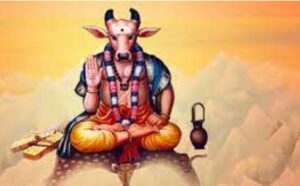
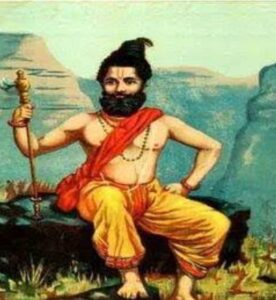
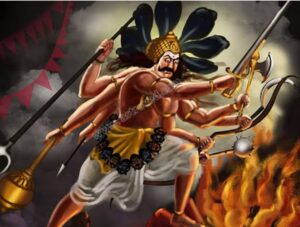
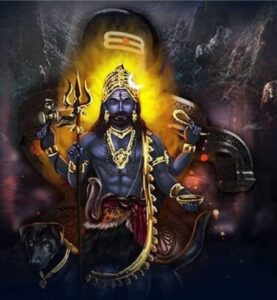
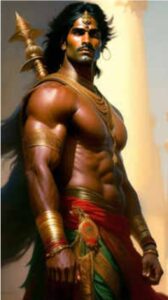



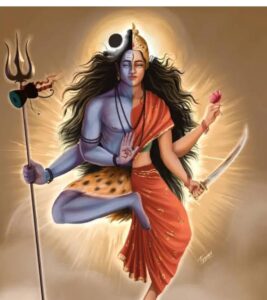

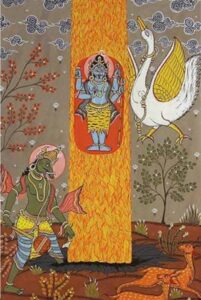
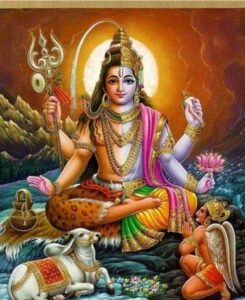
1 thought on “LORD SHIVA MOST POWERFUL 12 AVATARS”